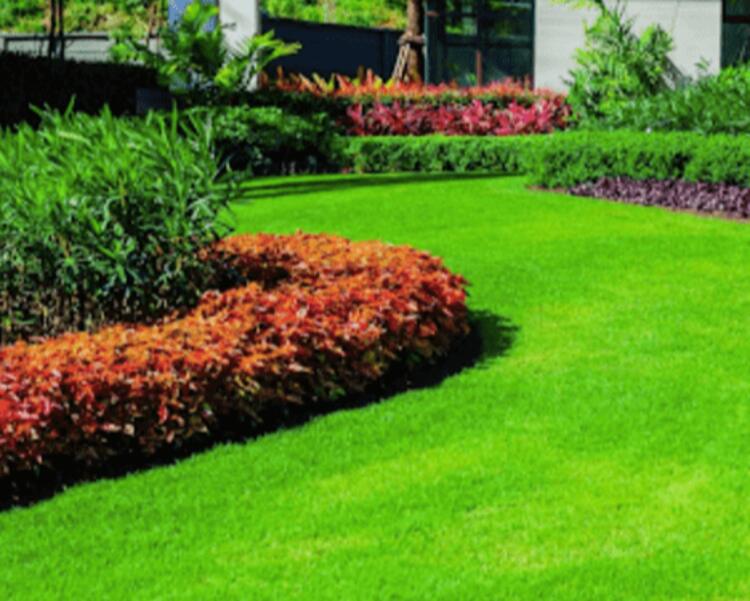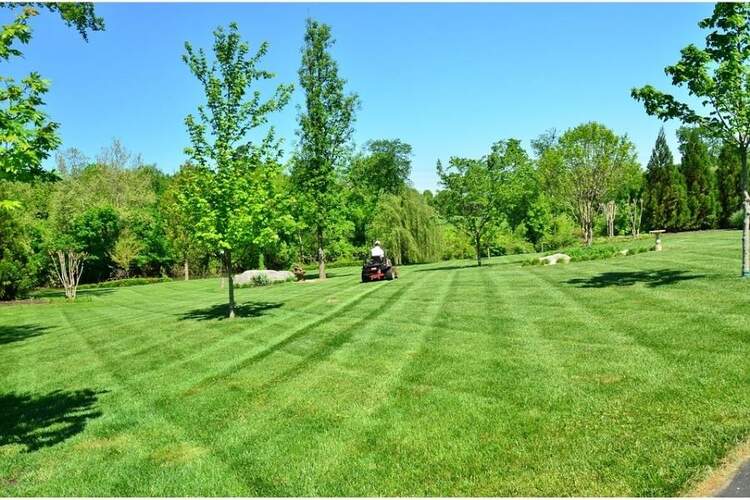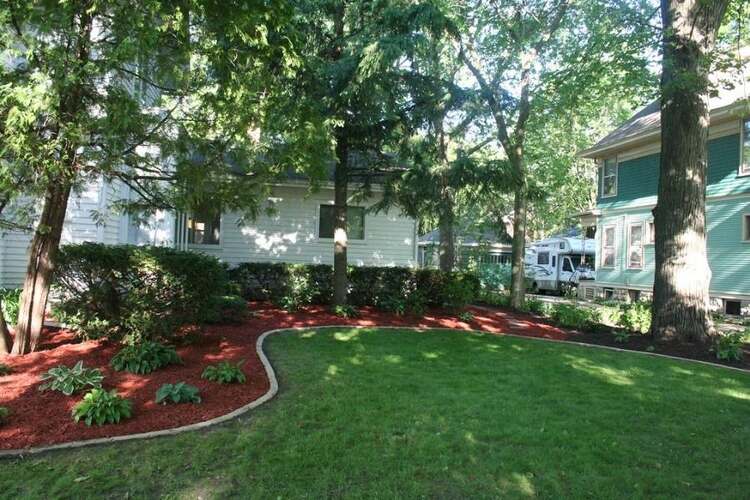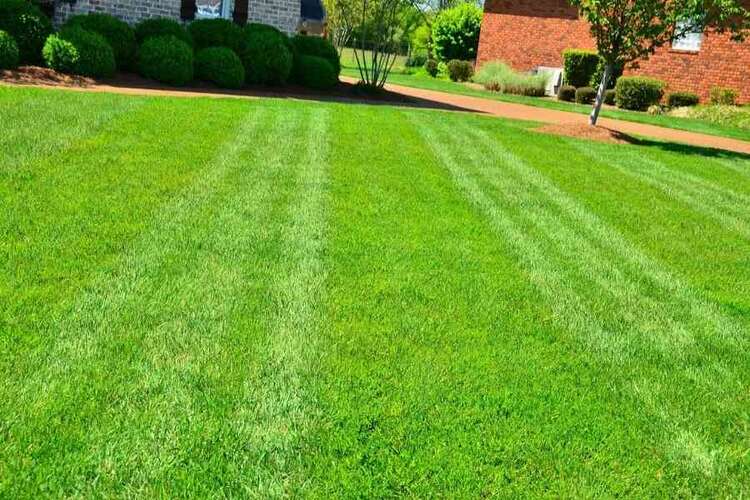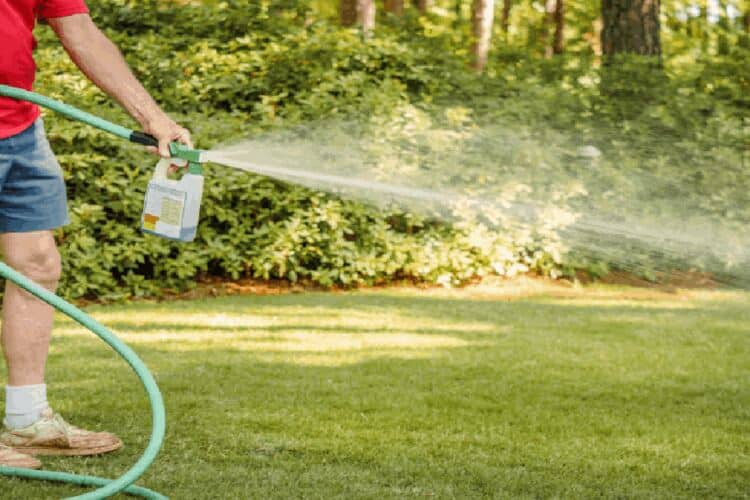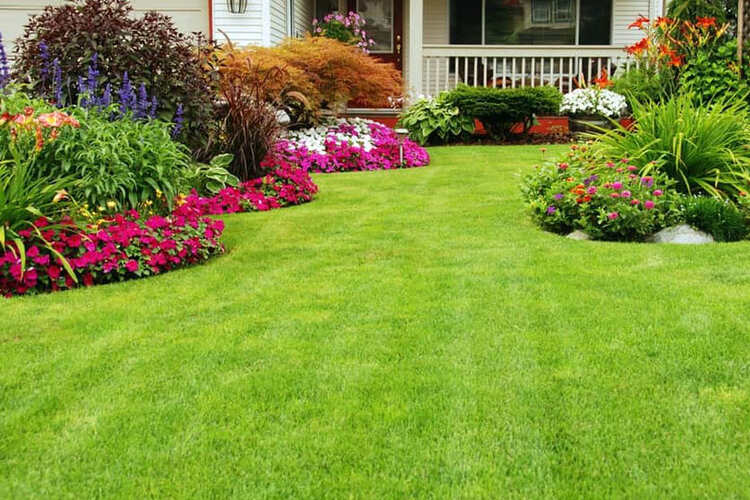Bermuda Grass Turning Brown: Causes & 5 Ways To Fix
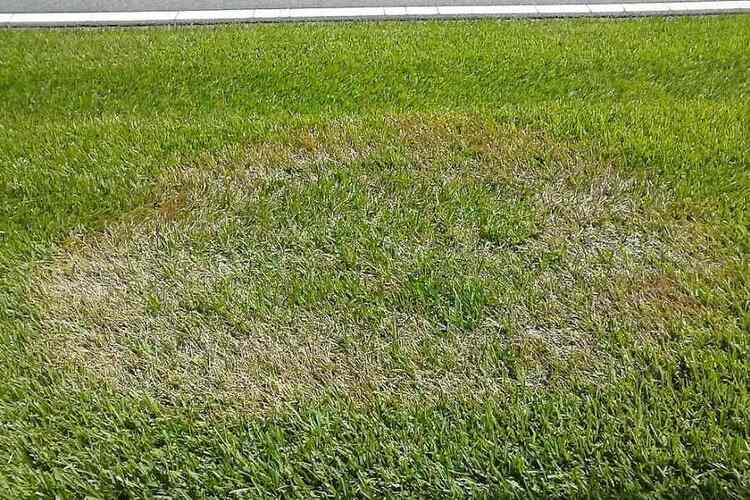
It becomes more problematic when you have Bermuda Grass turning brown, which appears to be spreading more significantly. If that’s the case, you’ll need to figure out what’s causing the problem, cure it, and get some repairs done before it spreads to your lawn’s healthy areas.
Each of the issues necessitates its own set of solutions or preventative actions. So, before you buy a can of anti-fungal pesticide for your lawn because you think you have brown patch fungus, consider the actual cause. Read on to dig deeper into the matter!
Why Is Bermuda Grass Turning Brown?
Soil compaction, cold periods, or growing in the shadow, which inhibits photosynthesis, can lead to Bermuda grass turning brown. Let’s check each cause’s analysis.
Compaction Of The Soil
Compacted Bermuda grass can also turn brown. The soil might get wet in regions where the dirt under the grass is tamped down. This will eventually suffocate the grassroots. Bermuda dies due to a lack of oxygen and inadequate drainage.
You must aerate Bermuda lawns to avoid soil compaction. You may revive it faster by manually sprigging Bermuda and propagating new grass blades.
Too Much Shade
Bermuda grass requires sufficient sunshine for photosynthesis. Thus, heavily shaded portions of your lawn are prone to dead grass patches.
Each day, Bermuda needs at least 4 hours of direct sunlight. Less sunlight exposure leads the grass to photosynthesize less, lowering the amount of energy available to the plant and slowing its development. It’s a good idea to mow at a greater height while growing beneath the canopy of bushy plants. By doing that, the grass may catch more light and retain heat.
Low Temperatures
Bermuda is a tropical grass that grows in warm climates. The active growth season for Bermuda begins in April and lasts through September in most regions where it thrives.
When the temperature consistently drops below 55 degrees, your Bermuda lawn may develop dark patches during its dormant period, which will not be removed until the warmer seasons return.
Brown Patch Disease
Bermuda grass is among the warm-season grasses that are most susceptible. Especially in the early spring and late fall, when nighttime temperatures might reach 70 degrees Fahrenheit.
When browning spreads or brown patches become more prominent, this is a sign of disease. Rhizoctonia is a fungal pathogen that causes it. The majority of these fungi remain latent until the ideal conditions for growth and reproduction arise.
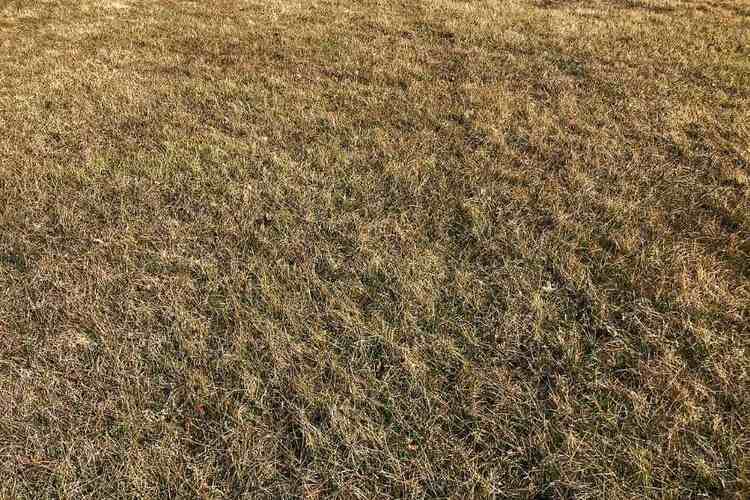
Dollar Spot
The issue that allows dollar spot to take hold is that the roots are dry, while the grass’s morning dew and moisture from the air are from the top down. You may avoid dollar spots by using a nitrogen-rich fertilizer. It would help if you did that at least once a month.
Additionally, you must take annual actions to guarantee that water reaches the roots. Dethatch the lawn in the early spring and core-aerate it by punching holes.
Spring dead spot
Spring dead spot is a fungal infection that primarily affects well-kept lawns. The more carefully you apply liquid fertilizer, the more enticing this fungal illness becomes. It’s simple to spot. On Bermuda, it forms brown circles. It may seem like a bleaching effect, depending on the intensity. Pick a sprig of grass to investigate where you detect brown patches.
Every component of Bermuda rots in the spring, including rhizomes, crowns, stalks, and stolons, which are all parts of the plant. Treating spring dead spots in Bermuda requires a delicate balance of fertilizer treatment rates during the growing season and the use of a fungicide after it has gone dormant in late fall.
How Do You Fix Brown Bermuda Grass?
Once you’ve identified the cause, it’s time to start addressing the problem. Consider some of the methods below to see which one works for your case.
Fungicides
Broad-spectrum fungicides are available for lawns. It will be easier to cure if you can specify the precise type of fungus. It would help if you did fungicide spot treatments once every two weeks. You can also use Anti-fungal pesticides and fungicides, such as Southern AG Liquid Copper Fungicide. However, the high costs of treating Bermuda fungus are why this is an issue that you should want to avoid rather than fix.
It’s good to plough the ground beneath the sods since this often-overlooked procedure aids with compaction relief. In addition, it’s best to avoid midnight watering throughout the summer because brown patch disease propagation is due to nocturnal moisture on hot days. Lastly, prune adjacent plants to provide enough airflow above your Bermuda, creating an atmosphere that isn’t favourable to fungal development.
Top Dressing With Either Compost Or An Organic Soil Mix
Heat stress causes brown areas on your lawn. But you can prevent that by applying a top dressing of compost or an organic soil mix. It frequently occurs during the summer, when the soil tries to hold moisture. Rake in a half-inch of organic compost or soil to relieve dry brown spots produced by heat stress.
Control Pests
You can use a suitable grub-control insecticide to kill and prevent grubs. However, if brown areas of dead grass appear every season, you might wish to take preventive action. The timing of grub management is critical, and you must do it perfectly to avoid Bermuda dead areas in the following seasons.
Aerate Your Lawn To Reduce Compaction
Bermuda roots require a lot of space to flourish. Aeration of the lawn eliminates soil plugs, allowing the roots to expand. You will improve nutrient absorption, and your Bermuda blades will recover their attractive, lush green appearance thanks to a more significant movement of water and air to the roots.
Reduce Shade
To get rid of brown patches on your lawn, provide Bermuda grass with at least 4 hours of direct sunlight every day. To enable more sunlight to reach your property, cut back shrubs and trees. If this isn’t a possibility, a different variety of grass or ground cover than Bermudagrass can be a better fit for your yard.
Furthermore, if you want to avoid brown areas, cut your Bermuda no shorter than one-and-a-half inches when mowing. As a result, a significant length of each leaf blade will be exposed to direct sunlight, ensuring that adequate leaf surface area is left to support photosynthesis. It reduces the amount of tension caused by shading.
How To Prevent Brown Patches?
- Regular mowing
During the growing season, frequent mowing at exact heights is essential for Bermuda lawn care. When there isn’t much sunshine, limit it to around 2 inches. When the sun is shining brightly, mowing twice weekly to keep the grass height under 2 inches prevents the grass from growing too long and becoming brown at the bottom.
- Use a cool-season grass seed as an overseed
Overseeding your Bermuda turf with cool-season seed is one of the best strategies to prevent brown areas in your lawn. The cool-season variety will not become dormant in the autumn and winter, allowing your lawn to maintain its lush appearance despite the Bermudagrass’s inactivity.
- Identify and treat lawn diseases.
A definite identification of the fungal illness or condition afflicting your Bermuda is critical in ensuring that you are spending money on treatments that will work.
The turfgrass disease sample procedure confirms whether or not your illness diagnosis is correct. The following is the suggested sample procedure:
- Choose one of the diseased or brown patches.
- Determine the disease margin, which is the line where living and dead grass meet.
- From the disease margin region, take a four-by-four-inch square turf sample. Fresh grass should make up half of the selection, while dead grass should make up the other half.
- Do not remove the roots.
- Keep the model away from heat and anything else that might quickly dry it out.
- Take the piece to your county extension office for a professional evaluation. It would help if you did this as soon as possible to avoid the sample drying out.
- If you can’t get your Bermuda sample to the lab the same day you dig it up, keep it refrigerated. It will also prevent it from drying out.
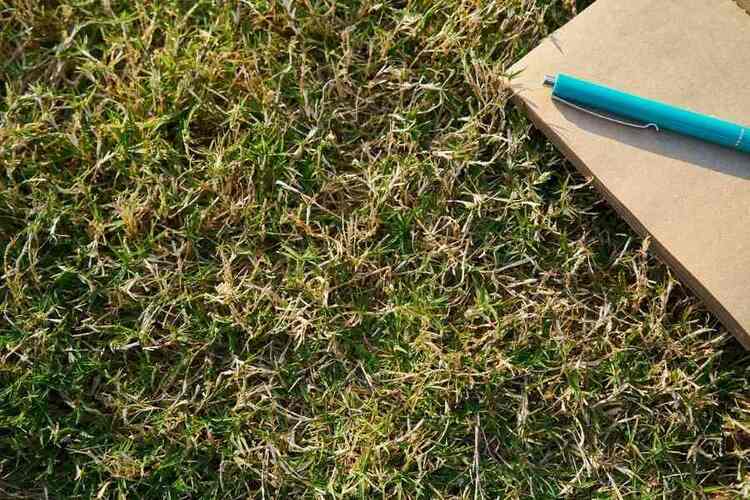
Is Brown Bermuda Grass Dead?
When your lawn goes brown, it might be difficult to discern if it is merely dormant or dead. You may have to wait until the seasons change to find out for sure. But it’s crucial to attempt to determine if your grass is sleeping or dead so you can decide whether or not to continue caring for it. Whether you take care of it or not is up to you.
Will Brown Bermuda Grass Turn Green Again?
It might take up to a month for natural grass to go dormant before it dies. The summer heat frequently lasts longer than a month. As drought conditions improve and temperatures drop in the autumn, homeowners with natural lawns will need to boost watering during the summer drastically.
On the other hand, a dead lawn looks like dormant grass but does not come back when the weather improves or when you take action to rejuvenate it. If your grass has perished, you’ll need to reseed or replace it to restore a healthy, green lawn.
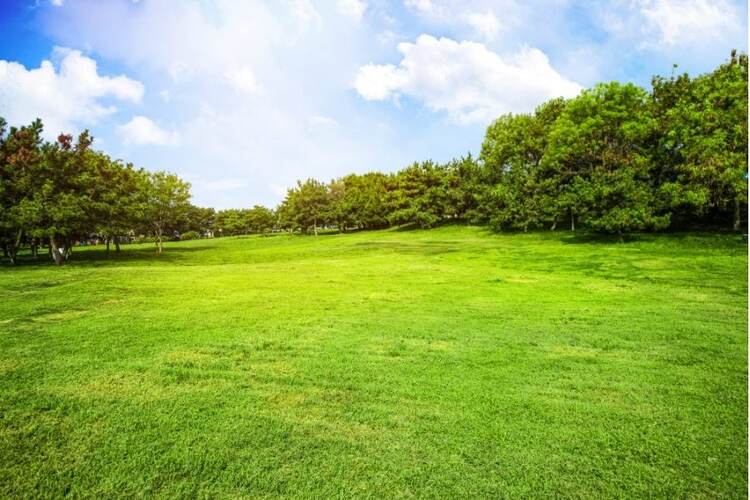
Can You Overwater Bermudagrass?
If you believe that your summer lawn troubles are due to drought, double-check that you’re watering your lawn adequately. It would help determine how much water your property requires by measuring the soil’s moisture intake. Your grass needs around two inches of water each week, and if it doesn’t get that from rainfall, you’ll have to supplement with irrigation.
Water early in the morning to avoid evaporation and agitating lawn illnesses. If you overwater Bermuda, the soil under the roots may become very compact. Water droplets striking the grass gently fall to the earth, forming a solid connection and sealing off below-ground air spaces, making it breathless.
Conclusion
Your grass is still brown, whether it is dead or dormant. Plus, even if a natural lawn falls dormant, you must maintain it. You can keep a fantastic lawn free of brown spots, patches, and thinning regions by correctly feeding the grass, hydrating it, and following the best planting and sodding procedures.
Related post:


